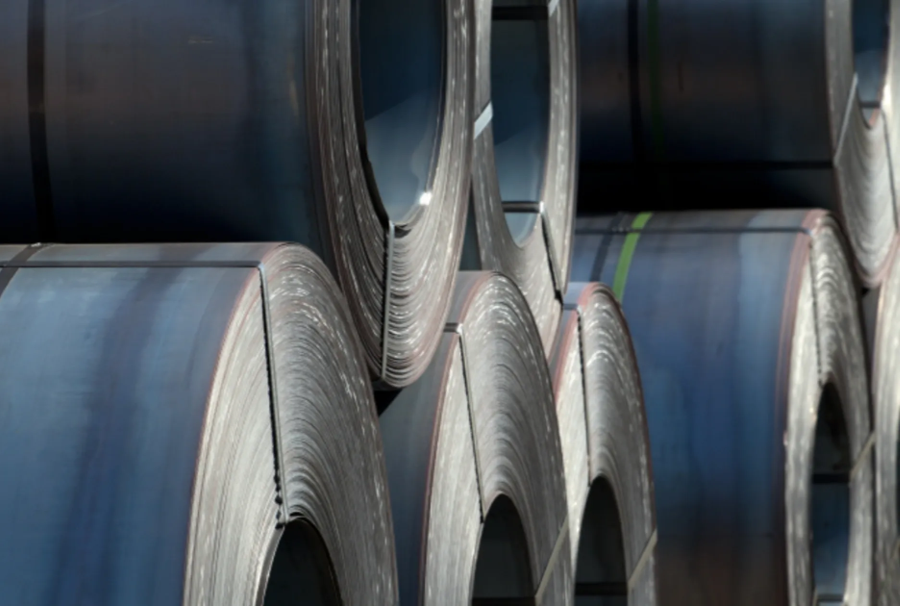Mexico
February 9, 2023
Tampa Steel: Ternium Sees Tons From Pesquería Replacing Imports
Ternium Mexico president César A. Jiménez sees the company’s investment in Pesquería, outside of Monterrey, as an opportunity to replace imports with steel produced in Mexico.
![]() Jiménez sat down with SMU managing editor Michael Cowden at SMU’s Tampa Steel Conference for a Fireside Chat. Beyond Pesquería, he gave his thoughts on a range of topics, including “unfair” imports, the United States-Mexico-Canada Agreement (USMCA), and decarbonization.
Jiménez sat down with SMU managing editor Michael Cowden at SMU’s Tampa Steel Conference for a Fireside Chat. Beyond Pesquería, he gave his thoughts on a range of topics, including “unfair” imports, the United States-Mexico-Canada Agreement (USMCA), and decarbonization.
Last year, Ternium announced a new cold-rolling mill, a hot-dip galvanizing line, a push-pull pickling line – total investment of approximately $1 billion. Those value-added lines are expected to start up in 1H 2024. The site already includes a new, 4.5-million-ton-per-year hot strip mill. Also on the horizon is a greenfield electric-arc furnace (EAF) facility.
“As our CEO (Máximo Vedoya) said a few months ago, the deadline is 2027, and it is a critical project for us,” Jiménez said.
Vedoya has said that Ternium is committed to bringing all its facilities into USMCA compliance by 2027. That would entail adding additional local melt capacity.
When asked if the company would be producing more challenging grades of steel in Pesquería, Jiménez said they are already making sheet for API-grade line pipe and exposed automotive applications.
He said, in general, the new capacity being added at Ternium “will be replacing imports from overseas.” He thinks the company won’t have to do this alone because the Mexican government will likely assist in combating imports from Asia and other overseas jurisdictions.
“At least in Mexico it will be normal dumping cases in fighting against unfair imports,” he said, noting that Mexico would be unlikely to use non-traditional measures such as Section 232 in the US.
Looking at the wider picture, Jiménez said Covid changed the way supply chains work, and companies need to adapt to those new changes. That includes near-shoring, or “friend-shoring” – moving businesses back from overseas to locate among political allies, Jiménez said.
“Neighboring countries can help out in making the supply chains run more smoothly,” Jiménez said, especially within the USMCA trade bloc.
“Governments realize that the closer the supply chains are,” the more competitive the region is going to be, he said. He added that the USMCA area is perhaps the most stable and balanced in terms of supply/demand in steel production.
While near-shoring is one issue talked about in the current business climate, another is decarbonization. Jiménez said the company aims to reduce emissions by 20% by 2030.
And might Ternium expand not only by building new facilities but also via mergers and acquisitions, Cowden asked, noting the wave of acquisitions that have taken place in the last few years in the US steel sector. “We are always looking for opportunities,” Jiménez said.
As for prices, Jiménez observed that while steel prices trended down in the second half of 2022, they appeared to rebound in the fourth quarter. He expects that trend to continue for a few months.
However, he noted that, “Inflation is still high, interest rates continue to increase, so we can’t say everything will be rosy from now on.” He also predicted that markets would see more typical cycles following the huge swings stemming from the pandemic and the war in Ukraine. That would be “a good result for us,” he said.
By Ethan Bernard, ethan@steelmarketupdate.com






